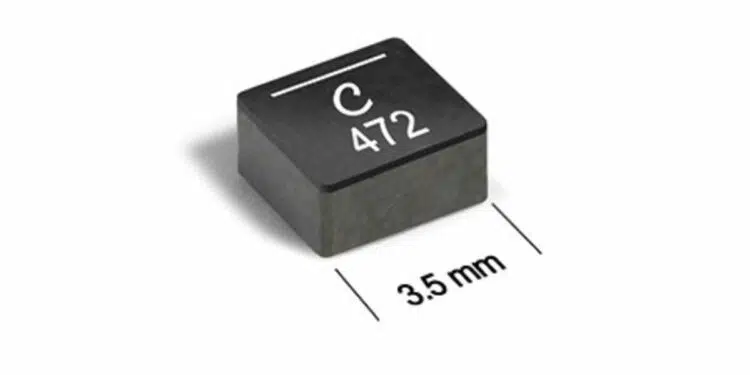Coilcraft introduced XGL3520 molded power inductors that offer lowest DC losses and extremely low AC losses for a wide range of DC-DC converters. Additional performance benefits include a wider range of inductance values and improved Irms current ratings.
Coilcraft XGL3520 Series of ultra-low loss, molded power inductors offer up to 40% lower DCR than previous-generation inductors as well as extremely low AC losses, resulting in the best overall efficiency for a wide range of DC-DC converters with switching frequencies ranging from hundreds of kHz to 5 MHz and above.
The Coilcraft XGL3520 features an expanded inductance range from 0.10 to 4.7 µH, with current ratings up to 15.9 Amps and soft saturation characteristics. It also offers a 30% increase in Irms self-heating current, allowing the XGL3520 to operate much cooler than prior-generation components. The XGL3520 Series has a voltage rating of 80 V.
Coilcraft XGL3520 Series inductors are qualified to AEC-Q200 Grade 1 standards (-40° to +125°C ambient) with a maximum part operating temperature of +165°C, and they exhibit no thermal aging issues, making them suitable for automotive and other harsh-environment applications.
Features
- Industry’s lowest DCR and ultra low AC lossesAEC-Q200 Grade 1 (–40°C to +125°C)
- Superior current handling with soft saturation characteristics
- Wide inductance range from 0.1 to 4.7 µH
- COTS Plus tin-silver-copper and tin-lead terminations available
- Core material: Composite
- Environmental RoHS compliant, halogen free Terminations RoHS compliant tin-silver (96.5/3.5) over copper.
- Weight: 0.11 – 0.12g
- Operating voltage: 0 – 80V
- Ambient temperature –40°C to +125°C with (40°C rise)
- Maximum part temperature +165°C (ambient + temp rise)
- Storage temperature Component: –55°C to +165°C


































